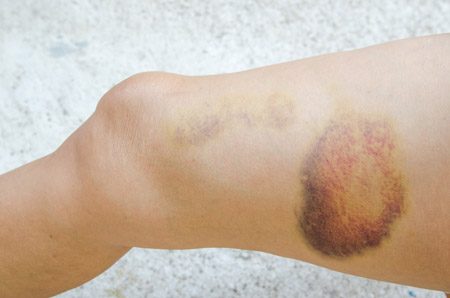Seri Surgical Scaffold Complications
The Seri Surgical Scaffold, a mesh made from silk, is used to support and repair weaknesses and damage in soft tissue. Although there are no documented cases of complications when the mesh is used as intended, a clinical study linked the implant to several serious side effects when used in a particular off-label breast reconstruction procedure.
The Seri Surgical Scaffold is a medical device derived from silk and used to support and repair weaknesses and voids in soft tissue in plastic and reconstructive surgery. The material is designed to dissolve or be absorbed by the body. It was studied in the U.S. in 139 patients observed for two years in a clinical trial called SURE-001. Patients underwent two-stage, implant-based breast reconstruction using Seri Surgical Scaffold.
In February 2015, interim data was reported for 71 patients who were tracked for one year. The data revealed that the device may have caused several serious side effects and complications in patients whose doctors used it specifically for breast reconstruction.
These complications included tissue death, pockets of fluid, hematomas, implant loss, immune system response and infection at the surgery site. However, Seri Surgical Scaffolds may have some innate antibacterial properties. According to a 2022 study, researchers found antibacterial activity in 16% to 35% of the silk proteins used in Seri Surgical Scaffolding.

Other serious complications are consistent with most surgical procedures involving implantable materials and include:
- Infection
- Inflammation
- Adhesion formation – occurs when two injured surfaces are close to one another and the scar extends from within one tissue to another, usually across a space or void
- Fistula formation – an abnormal connection between two hollow spaces, usually caused by injury or surgery, but also resulting from infection or inflammation
- Loss of the implant, referred to as extrusion
Complications Related to Non-Approved Use
Clinical trials show Seri Surgical Scaffold patients rarely experience complications. One trial studied 139 patients from 2013 to 2015. The results recorded six different complications a minimal number of patients experienced. The trial investigators didn’t attribute any of the complications to the scaffold technology. Furthermore, the purpose for which the Seri Surgical Scaffold was used on the patients involved in the study (two-stage, implant-based breast reconstruction) is determined by the FDA to be a non-approved use of the medical device implant.
| Complication | Percent of Patients Affected |
|---|---|
| Tissue death (necrosis) or gangrene | 6.7% |
| Seroma (buildup of body fluids) | 5.7% |
| Hematoma (accumulation of blood outside of the blood vessels) | 4.8% |
| Implant loss (extrusion) | 3.8% |
| Capsular contracture (scar tissue that causes tightening and hardening of the breast implant) | 1.9% |
| Breast infection | 1% |
Those with a silk allergy may also experience some side effects, including swelling and redness. People with a known silk allergy are not recommended to use Seri Surgical Scaffold.
High Number of Reported Complications Led to Recall
In January 2013, the manufacturer, in consultation with the FDA, issued a recall on all Seri Surgical Scaffolds because of an increased report of complications.
The product is prepared in dual packaging and, according to the recall, a seal on the outer pouch was not maintained on some products. As a result of the packaging process error, the sterility of the scaffold may have been compromised. It is more likely a patient will experience side effects if the scaffold is not properly sterilized before implantation.
Information about the Seri Surgical Scaffold from Allergan in 2014 states that Seri Surgical Scaffold is supplied sterile for single patient use only, and advises physicians to not re-sterilize the product. Furthermore, the information warns that the device should not be used if the sealed pouch is punctured, torn or otherwise compromised.
Diagnosing and Treating Complications
In addition to the possible complications patients may experience because of Seri Surgical Scaffold, surgery also carries many risks and possible complications. If patients develop any complications following surgeries, it’s best to consult their surgeon right away. The surgeon may be able to identify if the scaffold or another reason is the cause of the complication or not and devise a treatment plan.
Treatment of Seri Surgical Scaffold complications varies based on the complication, and is therefore up to the doctor’s discretion. Treatments might include administering antibiotics if a patient experiences infection. On the other hand, if a patient has a silk allergy, additional surgery will need to be performed to remove the scaffold.
In one case reported to the FDA in 2012, the patient experienced an infection, fever, seroma, extrusion, inflammation and pain in the breast. The patient was taken to the emergency room and admitted for a longer stay at the hospital. She was treated with the removal of the scaffold and a new drain placement.
Calling this number connects you with a Drugwatch.com representative. We will direct you to one of our trusted legal partners for a free case review.
Drugwatch.com's trusted legal partners support the organization's mission to keep people safe from dangerous drugs and medical devices. For more information, visit our partners page.


